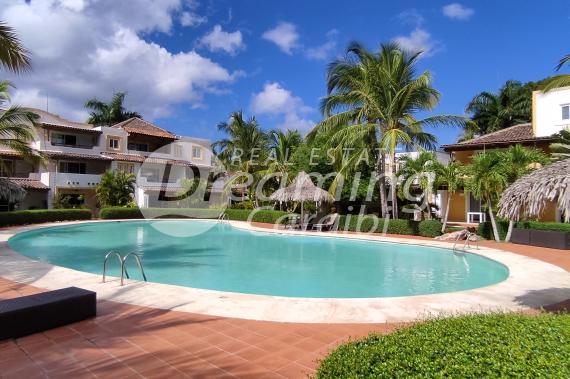Information and facts about the island
Territory hydrographyDominican Republic of Central America, which occupies the eastern part of the island of Hispaniola, located between Cuba and Puerto Rico. For the physical characteristics ➔ Hispaniola.
1. Population
With the arrival of the Spaniards, the indigenous inhabitants, perhaps 100,000 (Taino, of the Aruachi group, and Caribi), were practically exterminated and then replaced with black African slaves, who on the date of independence (1844) constituted, together with the Mulattos , about 90% of the population. Subsequently Neri and Mulatti decreased in percentage (today they are around 70%, with great prevalence of the Mulattos), both for the voluntary exodus towards the near Haiti, both, in the period of the dictatorship of RL Trujillo Molina, for the politics of encouragement of the immigration of farmers of European origin.
The demographic trend is characterized by a sustained annual increase (1.5% in 2008). The population is distributed rather irregularly, with large densities in the southern coastal plain and, above all, in the fertile Cibao valley, north of the Central Cordillera; the lowest densities are found in the provinces of Pedernales and Independencia, located in the arid south-western areas towards the border with Haiti. The urbanization process has been intense since the 1980s, raising the urban population to over 59%, about a third of which is concentrated in the capital Santo Domingo, the country's main production center. The second city is Santiago de los Caballeros, in the Cibao valley; the other centers have modest demographic amplitude, even if they play roles of some importance such as local markets (San Francisco de Macorís) or sea ports (La Romana). The religion of the great majority is Catholic.
2. Economic conditions
The growth of cities has gone hand in hand with the decrease in employees in the primary sector, but agriculture continues to be a significant activity, even though the sector is very vulnerable, both due to natural disasters and dependence on world markets , since the main crops are export-oriented ones. The prevailing and most profitable crop is that of sugar cane, widespread in particular in the southern coastal plain, whose crops require a large amount of labor, which seasonally immigrates from Haiti; on the hilly slopes of the Sierra de Bahoruco, coffee prevails, while cocoa and tobacco are widespread on the inland plains. Among the subsistence crops, rice, corn, cassava and fruit prevail. Arable crops and tree crops cover 30% of the land area, permanent meadows and pastures 43%, forests 13% (fine wood and coloring products); but not all favorable areas are used, despite the progress of irrigation. Breeding, favored by the abundance of pastures, is rather developed, especially with regard to cattle. The main mineral resource is nickel, from the Monseñor Nouel deposit, in the Central Cordillera.
Conditioned by the lack of energy, skilled labor and capital, the industrial sector is essentially linked to the processing of agricultural products (sugar mills, breweries, oil mills, alcohol and rum distilleries, cotton mills, tobacco factories), with the exception of some free zones, where the industry shows greater dynamism. Large nationalizations still exist, but since 2000 privatizations have also begun. The average per capita income, although increasing thanks to US economic aid, is lower than the Latin American average.
The trade balance is increasingly passive: imports come mainly from the United States, Venezuela, Mexico and Japan (machinery, oil and derivative products); exports are mainly directed to the USA (nickel, sugar and cigars). Good currency sources are tourism and emigrants' remittances. Since 2007, the Republic D. has joined the CAFTA (Central American Free Trade Agreement) which associates it with the USA along with Guatemala, Salvador, Honduras and Nicaragua.
Communications are guaranteed by a discrete road network (around 18,000 km), with arteries that radiate from the capital to the northern, western and eastern regions; the railway network (over 1700 km) is almost entirely at the service of the plantations (transport of products to the ports of embarkation). The main port is that of Santo Domingo. Punta Caucedo International Airport.
HISTORY
Site of the first Spanish colonization in the New World (for the events prior to the 18th century. Isp Hispaniola), the colony, commonly called Santo Domingo from the name of its capital, grew from the few thousand units of the early eighteenth century to about 100,000 of a century later, while remaining much less prosperous than the French Saint-Domingue (➔ Haiti) and presenting a less polarized society. The Haitian revolution involved the colony (which the Basel Treaty of 1795 had assigned to France) and in 1801 Santo Domingo was occupied by the forces of Toussaint Louverture; recovered from Spain in 1809, the peace of Paris of 1814 sanctioned his return under the sovereignty of Madrid.
In 1821 it proclaimed itself independent, but it was invaded by the forces of Haiti, to which it remained annexed until 1844. The Haitian occupation, if it allowed the definitive emancipation of the slaves, was badly tolerated by the population for the ethnic and cultural differences that were consolidated between the two parts of the island. Nationalist resistance led to the uprising of 1843-44, which led to the birth of the Republic D. (1844). Further attempts at invasion by Haiti led the Dominican government to bring the country back under Spanish sovereignty in 1861, but a revolution restored independence (1865). In the nineteenth century the emigration of part of the black Dominicans favored the consolidation of Creole hegemony. Despite the existence of a constitutional regime since 1844, the struggle between the different groups of the ruling class caused a marked instability, interrupted only between 1882 and 1899 by the long dictatorial government of U. Heureaux. The process of modernization initiated by the latter stimulated development, capital flowed in from abroad but also the economic penetration of the USA grew. The strong growth of foreign debt and the financial crisis that broke out at the beginning of the twentieth century favored foreign interference and, in 1905, also to avoid intervention by European creditor countries, the United States took on Santo Domingo's debt and took over the administration of its customs (until 1940). In the following years Washington increased its influence, to the point of occupying the country militarily (1916-24); only in 1947, when the payment of the debt was exhausted, the Republic D.
In 1930, the army commander, RL Trujillo Molina established a personal dictatorship: he ruled the country for the next 31 years, either directly, as president of the Republic, or through presidents subordinate to him, exercising absolute dominion over all political life and social and taking control of a large part of the Dominican economy. After the assassination of Trujillo by a group of officers (1961), President J. Balaguer attempted to remain in power, but gave in to international pressure and the first free elections, in 1962, saw the victory of the progressive J. Bosch , founder of the Dominican Partido Revolucionario (PRD), but overturned soon after by a coup d'état. In 1965 a popular uprising overthrew the coup government, but it was suffocated by massive US intervention. The US occupation assured a moderate outlet to the crisis and the presidential elections of 1966 were won by Balaguer, now at the head of a Partido Reformista Social Christian (PRSC) who succeeded, thanks also to US support, in coping with subversive thrusts. Reconfirmed in 1970 and 1974, Balaguer maintained power until the victory of the PRD in 1978, which led to the presidency of A. Guzmán Fernández. In 1982 Guzmán was reappointed, but committed suicide following charges of embezzlement against members of the government and his family. After the presidency of SJ Blanco, whose policy of compression of domestic consumption produced clashes and dozens of deaths, in 1986 Balaguer returned to the presidency of the Republic. The protests of the opposition were reconfirmed in 1990 and 1994 also taken from the Catholic Church, they forced him to accept a reduction in his mandate. In 1996, new presidential consultations were won by L. Fernández, candidate of the PLD (Partido de la Liberación Dominicana, founded by Bosch in 1973), re-elected, after the four-year term of the presidency of RH Mejía, in 2004 and reconfirmed in 2008; in May 2012 he was replaced by D. Medina, who received a second term in 2016.






